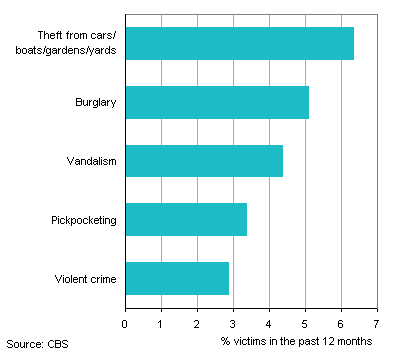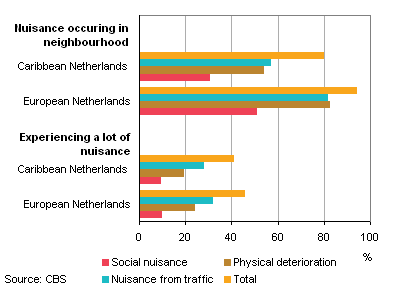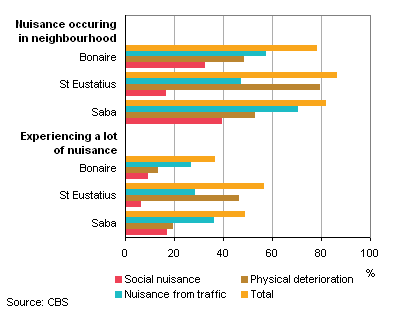Inhabitants of the Caribbean Netherlands usually feel safe

In 2013, more than 25 per cent of the population in the Caribbean Netherlands felt sometimes unsafe. Half of the population is of the opinion that there is no crime and 40 per cent that there is little crime in their own neighbourhood. Less than one in five residents were victim of one or more offenses in 2013. The figures come from the ‘Omnibus-survey’, which the CBS conducted in the Caribbean Netherlands in 2013.
The lowest rate of feelings of insecurity in St. Eustatius
In 2013, 28 per cent of the population aged 15 years and older in the Caribbean Netherlands felt unsafe sometimes. On St. Eustatius that proportion is the lowest at ten per cent. On Saba, 28 per cent indicated they felt unsafe sometimes and on Bonaire 33 per cent. In the European Netherlands an average of 37 per cent had an unsafe feeling sometimes.
Little or no crime in the own neighbourhood
The safety in the own neighbourhood scores 8.8 out of 10 from the people of Saba and St. Eustatius. On Bonaire, the score is much lower, though still more than sufficient (7.3). On Bonaire, 40 per cent is of the opinion that there is no crime in the neighbourhood, and 46 per cent think it is rare. On St. Eustatius, 80 per cent and on Saba 70 per cent think there is no crime in their neighbourhood.
Almost one in five residents are victims of crime
Seventeen per cent of the population aged 15 years and older in the Caribbean Netherlands indicated in 2013 that they had been a victim of one or more offenses in the last twelve months. Theft from cars, boats, gardens or yards was the most common (6 per cent); followed by burglary, vandalism, pickpocketing and violent crimes. Theft is most common on Bonaire (7 per cent), vandalism on St. Eustatius (8 per cent) and violent crimes on Saba (6 per cent).
Not all victims reported this to the police. Burglary, theft of cars or other vehicles and violent crimes were reported more often than theft from cars, boats, gardens or yards, vandalism and pick pocketing.
Victimization in the Caribbean Netherlands, 2013

Two in five persons experience much nuisance in their own neighbourhood
The respondents were asked about nuisance in their own neighbourhood. For thirteen types of nuisance it was asked whether it ever occurred in the own neighbourhood, and if so, to what extent people experienced the nuisance themselves. In the Caribbean Netherlands, 80 per cent of the population aged 15 years or older said that at least one of these nuisance problems occurred in the own neighbourhood. That is less than in the European Netherlands where 94 per cent indicated this.
Nuisance in the Caribbean Netherlands and the European Netherlands, 2013

Forty-one per cent of the population of the Caribbean Netherlands experienced nuisance in the neighbourhood themselves. This is especially true on St. Eustatius (57 per cent). On Saba that proportion was 49 per cent and on Bonaire with 37 per cent the lowest number of people experienced a lot of nuisance. In the European Netherlands, 46 per cent of the population in 2013 indicated they experienced much nuisance in the neighbourhood. Both in the Caribbean Netherlands and the European Netherlands people experience the most nuisance from traffic (such as speeding), followed by physical deterioration of the neighbourhood (such as animal faeces and rubbish in the street). Social nuisance (such as drunken people on the streets) is reported to a lesser extent. Younger inhabitants of the Caribbean Netherlands experience more social nuisance than older people. Higher educated people experience more physical deterioration than less educated and women experience more traffic nuisance than men.
Nuisance in Bonaire, St. Eustatius and Saba, 2013

On Saba more social nuisance is experienced than on Bonaire and St. Eustatius, and St. Eustatius is more affected by physical deterioration than the other two islands.
Judit Arends-Tòth en Christianne Hupkens
Source: StatLine